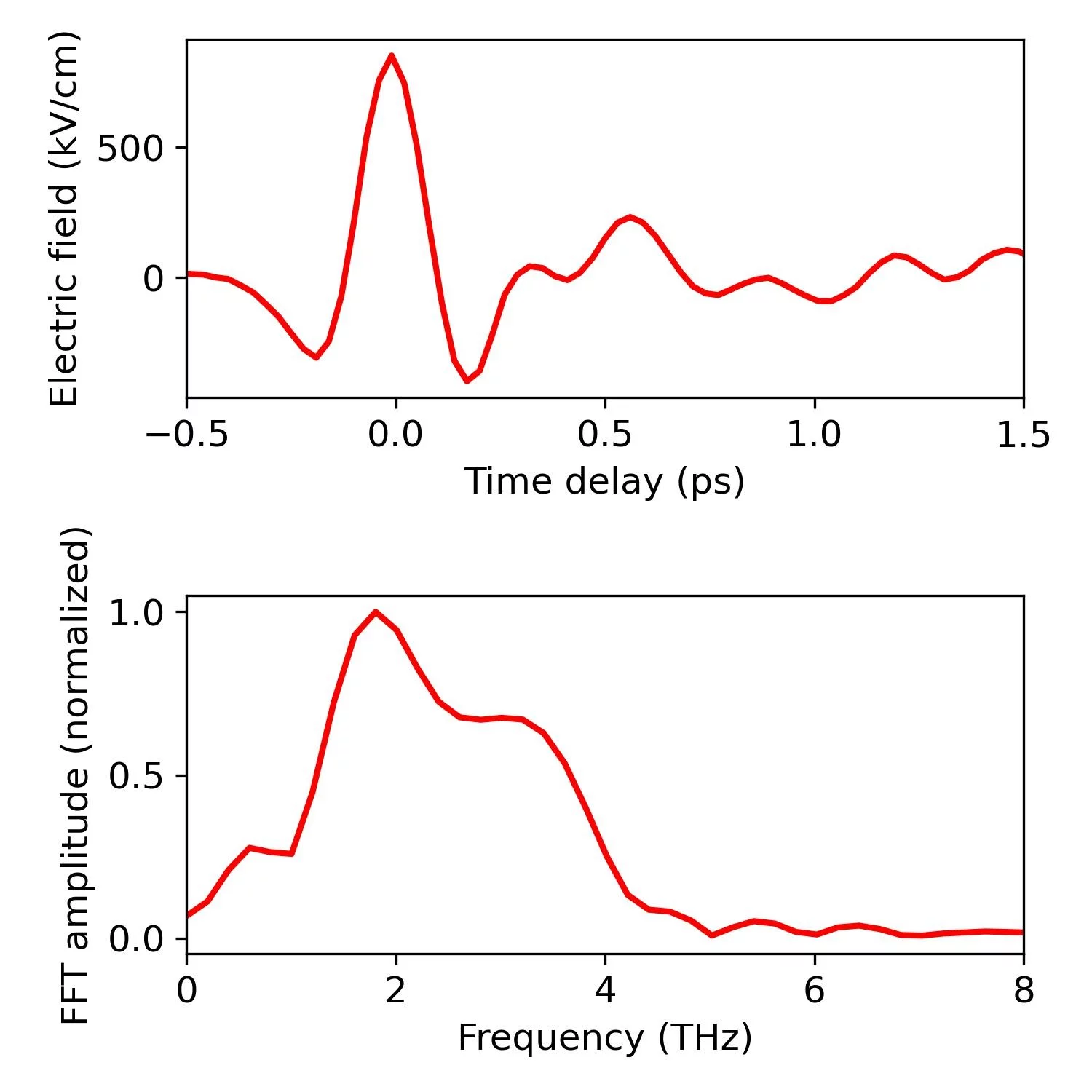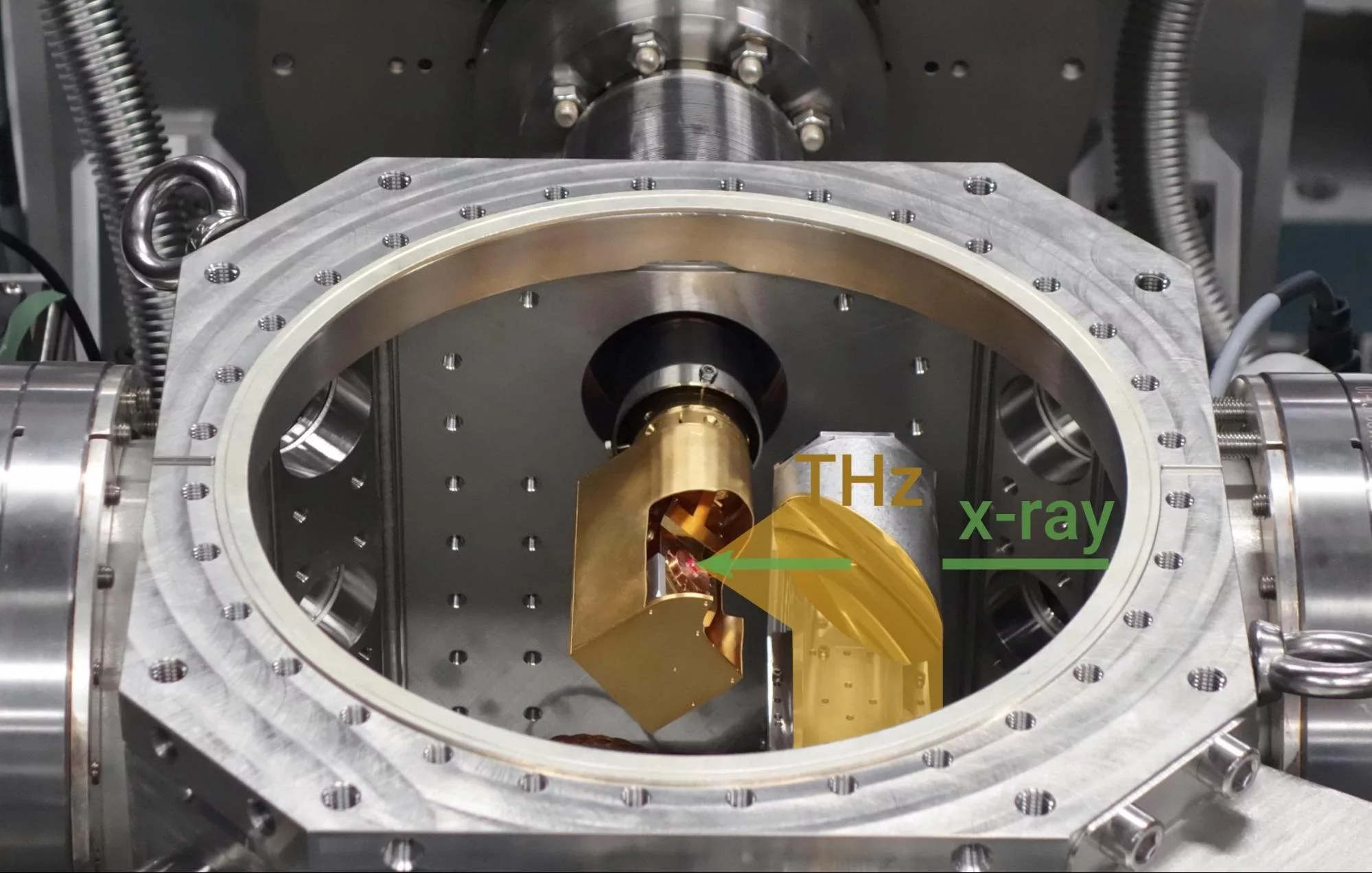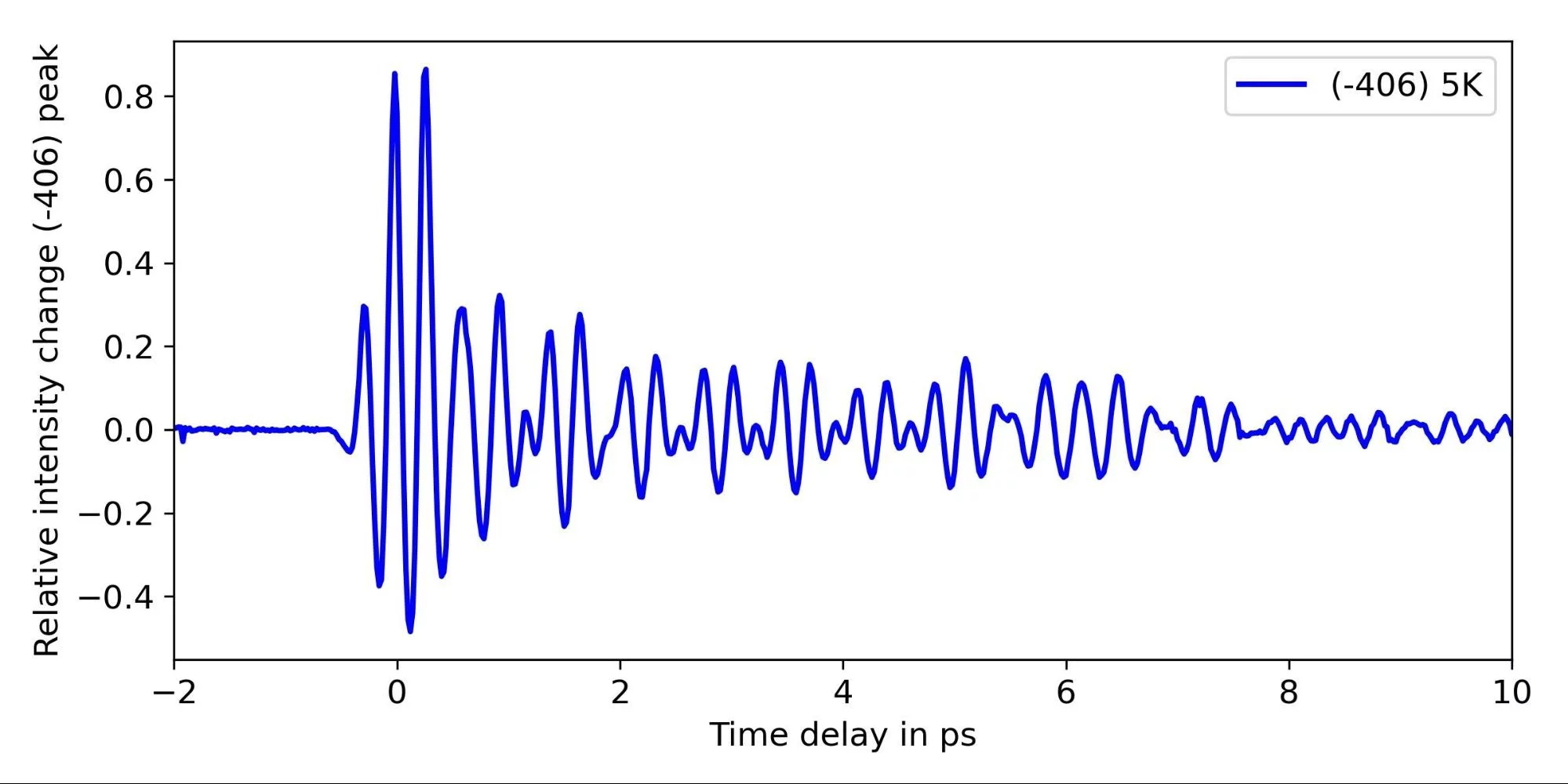Switchable material properties like magnetism or electric conductivity can be observed in strongly correlated electron systems. The ground state of such materials results from a subtle balance between magnetic, orbital and structural degrees of freedom. Small perturbations of this fragile equilibrium can lead to phase transitions involving dramatic changes in the macroscopic properties. The possibility to use electro-magnetic radiation, like pulses of light, to induce these changes opens up a pathway to control their functional properties on ultrafast timescales. Selected degrees of freedom can be excited with light pulses by tuning their frequency to electronic or vibrational resonances of the solid. In a recent experiment at the Bernina instrument, a new excitation pathway was investigated, by applying high field THz pulses to resonantly excite low energy crystal field levels. The long-range dynamics of the corresponding change of orbital order during excitation could be observed by ultrafast resonant X-ray diffraction. The collaboration from PSI and ETH includes specialists for ultrafast X-ray diffraction and THz science and was led by Bernina scientist Roman Mankowsky.
The investigated material, Tb2Ti2O7, is a magnetically frustrated Pyrochlore with no long range magnetic order down to the lowest temperature. Characteristic for this rare earth Titanate pyrochlore are degenerate ground states subjected to very low energy crystal field excitations of the Tb 4f states at 1.5meV (0.34THz), 10meV (2.4THz) and 16meV (3.8THz). The sample was cooled to 5KT to prevent thermal occupation of these very low energy states, and excited by single cycle broadband THz pulses with a frequency content of 0.3-4THz (1 - 16 meV) and a peak field of 0.9MV/cm.
The combination of such a high field with a low sample temperature was made possible by a dedicated vacuum chamber specially designed for this class of experiments at the Bernina instrument. Here, the THz field is strongly focused with an in-vacuum parabola, and the sample is cooled with a He flow cryostat and highly covered by heat shields. The X-ray pulses provided by SwissFEL are guided through a 1.5mm hole in the parabola on the sample collinear with the THz pulses to maintain optimum temporal resolution and also to permit THz polarisation studies. This setup has been commissioned since the beginning of 2020 and is now at Bernina available to the user community.
The resonant experiment on Tb2Ti2O7 revealed a complex oscillatory response in orbital order. The ion and orbital structural contributions can be distinguished by tuning the photon energy of SwissFEL x-ray pulses on and off the Tb L-edge resonance at 7522.5keV and measuring the time-resolved changes of structural and orbital diffraction peaks. THz excitation induced changes of the orbital (-406) diffraction peak at resonance are shown for a sample temperature of 5K. The time trace shows large oscillations at 3.7THz, close to the third crystal field level with a maximum amplitude change of the orbital peak intensity exceeding 80%, demonstrating the high sensitivity to the resonant excitation. The experiment opens new possibilities to investigate ultrafast phase changes while they appear, thanks to a detailed view of the electronic structure on shortest timescales offered by X-ray FEL pulses and resonant diffraction techniques.
Contact
Dr. Henrik Till Lemke
Group Leader
Paul Scherrer Institute
Forschungsstrasse 111
5232 Villigen PSI
Switzerland



